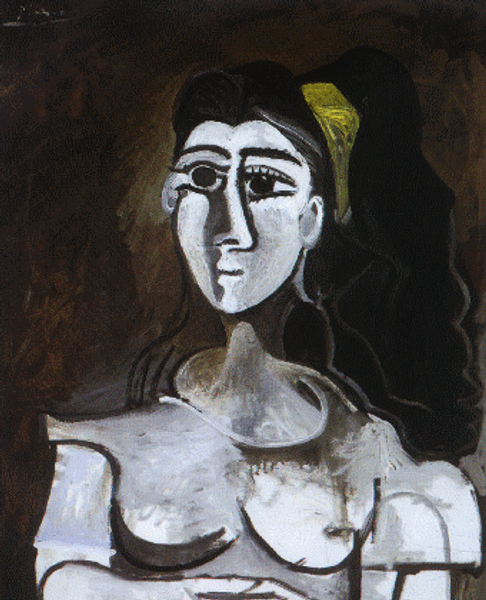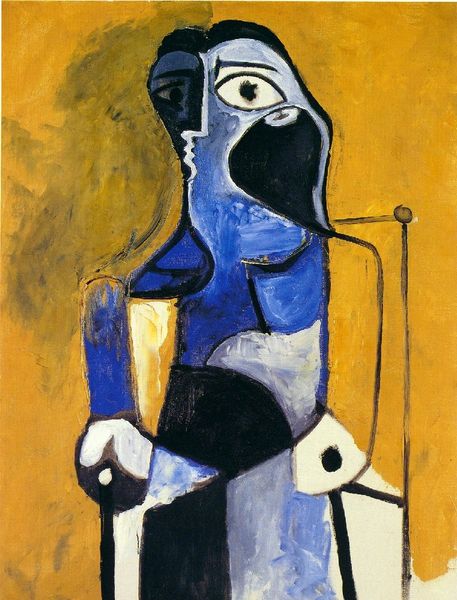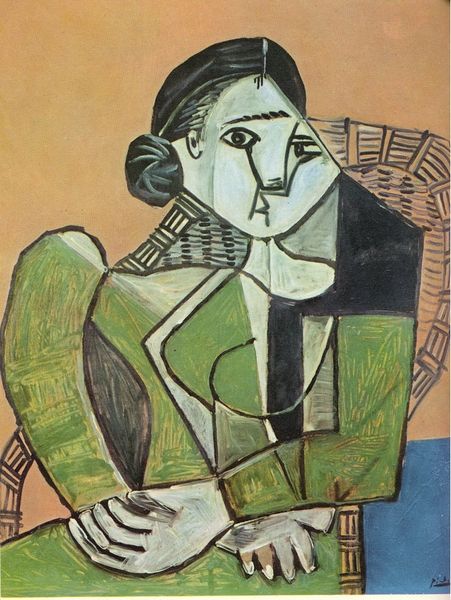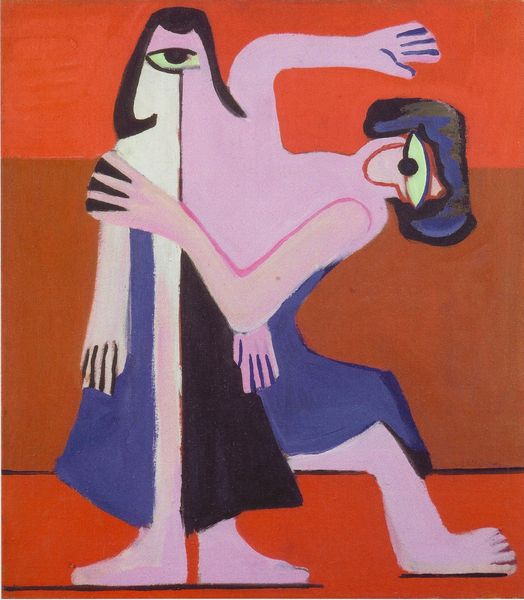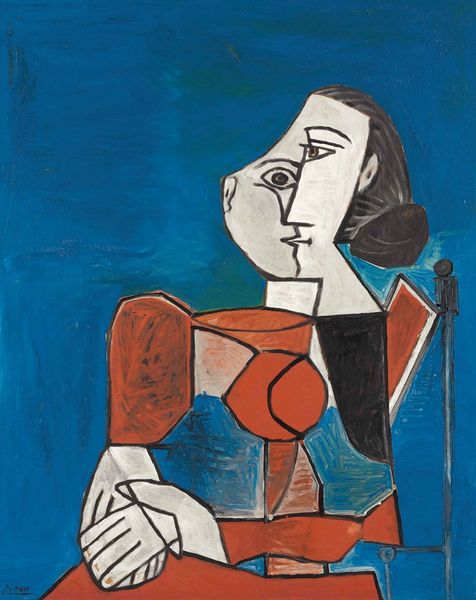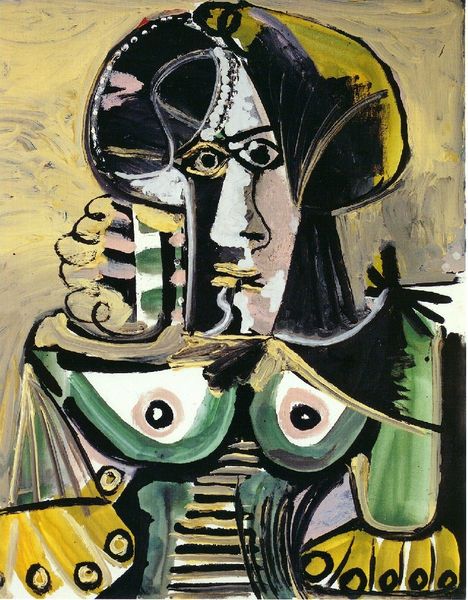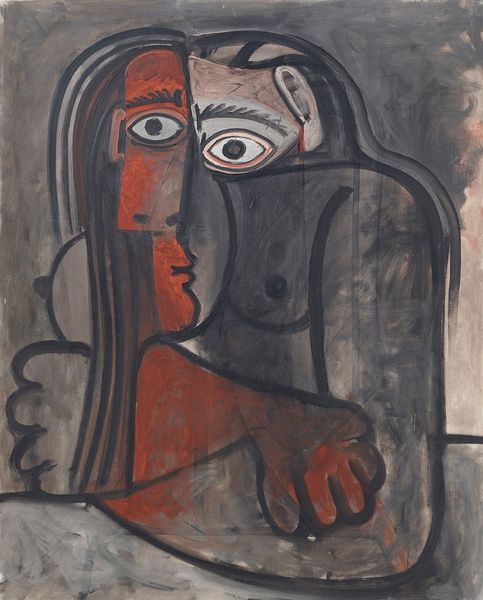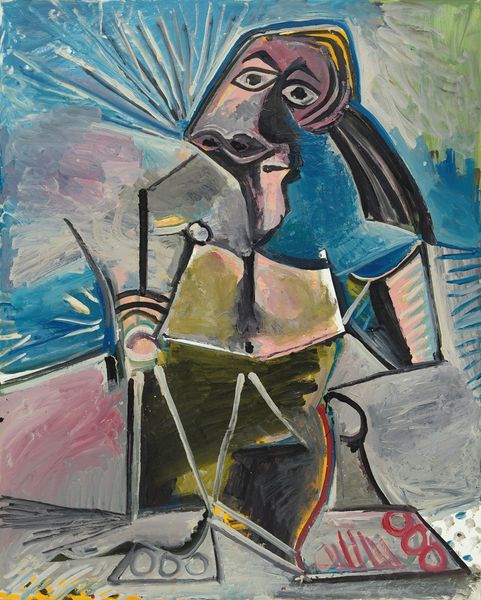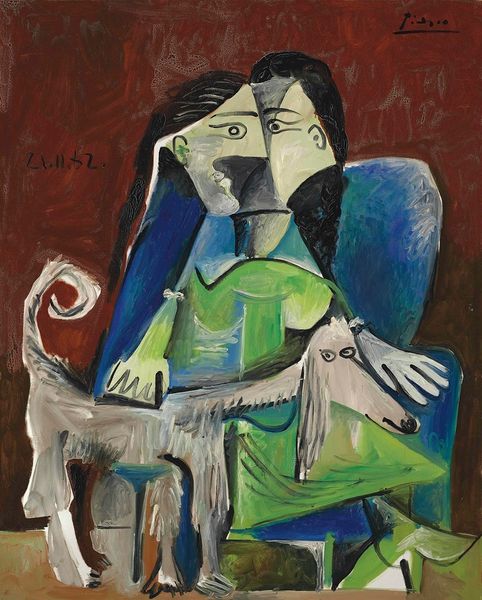
painting, oil-paint
#
portrait
#
cubism
#
painting
#
oil-paint
#
modernism
Copyright: Pablo Picasso,Fair Use
Editor: This is Picasso's "Woman Sitting in Blue Armchair," painted in 1962 using oil paints. The overlapping planes of color create an unsettling yet intriguing composition. What social commentary, if any, do you think Picasso was making here? Curator: That’s a very perceptive reading. While visually striking, it's crucial to remember that Picasso’s portrayals of women, particularly later in life, often reflect a complicated, arguably problematic, gaze. Consider the power dynamics inherent in the artist-model relationship and how Cubism, in its fracturing of form, can both reveal and distort the female subject. Is it possible to separate Picasso's artistic genius from these social dimensions? Editor: It's definitely complex. The painting feels both intimate and distant, the woman present, yet almost fragmented. I wonder, was Picasso purposely challenging traditional ideals of femininity? Curator: Perhaps, or perhaps he was reinforcing them in his own way. How does the fragmentation reflect societal pressures placed on women to embody multiple roles, to be seen from multiple perspectives, often dictated by a patriarchal structure? The "blue armchair" itself is a loaded symbol of bourgeois domesticity, isn't it? It also brings us to consider his muse. Do we know the circumstances surrounding this sitting? The politics around who gets a seat at the table…or an armchair? Editor: I hadn’t considered that interpretation before, it's fascinating! Thank you! Curator: Likewise! It's vital that we consider these kinds of layered contexts. Thinking about whose story is being told and *how* it’s being told in relation to its subjects encourages a more conscientious viewership.
Comments
No comments
Be the first to comment and join the conversation on the ultimate creative platform.
